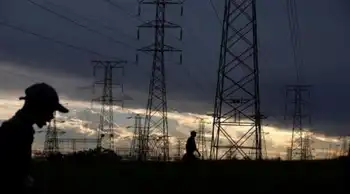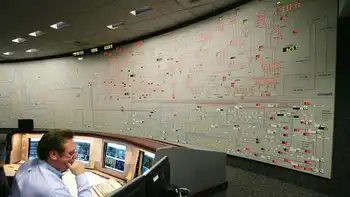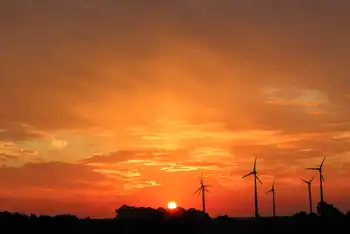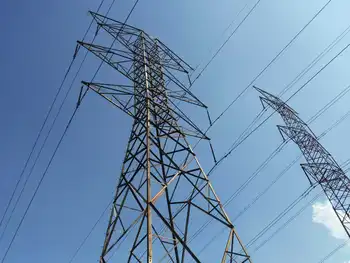Energy Efficiency Could Gain Favor
By New York Times
Electrical Testing & Commissioning of Power Systems
Our customized live online or in‑person group training can be delivered to your staff at your location.

- Live Online
- 12 hours Instructor-led
- Group Training Available
"We've planned for a rush to these types of products this winter," said Craig Menear, senior vice president for merchandising at Home Depot, which recently published a catalog highlighting energy-efficient products.
To understand the challenges facing energy-efficiency advocates, though, consider lighting. Sales of energy-efficient compact fluorescent lights are the fastest-growing segment of the market. But even in states like Wisconsin, where utilities have subsidized purchases of energy-efficient lighting for more than a decade, cheap incandescent bulbs outsell the newer technology by a four-to-one margin.
The Energy Department estimates that if every American homeowner simply replaced the incandescent lighting in his or her five most frequently used fixtures with compact fluorescents, the nation would save 800 billion kilowatt-hours of electricity consumption - the equivalent of shutting down 21 power plants. The cost of fluorescent bulbs is typically 8 to 10 times that of incandescents, but that initial outlay would be offset over time by their much longer life and by lower electricity bills. (As an added benefit, the Energy Department estimates, utilities would emit one trillion fewer pounds of the types of gases that contribute to global warming.)
While earlier generations of the bulbs did not fit inside many lighting fixtures, the newest designs are no bigger than the average incandescent bulb, and the industry has improved quality as well.
But no one is betting that the American lifestyle will change anytime soon to capture the potential savings. For one thing, if all households made the change, it would take about 500 million fluorescent bulbs to meet the department's goal. While manufacturers have been expanding their capacity, the total annual production capacity at the moment for such lighting is probably not much more than 55 million bulbs, according to Steve Goldmacher, a spokesman for Philips Lighting USA.
According to energy experts, lighting is just one of many fields where engineers and designers are inventing energy-efficient products faster than the products are being widely embraced. Sometimes the best-in-class technologies roll out slowly because of manufacturers; Toyota , for instance, has taken a cautious approach to expanding production and marketing for its sold-out Prius, a hybrid gasoline and electric car with a fuel efficiency that far surpasses that of anything Detroit has offered.
Next year will be the first year that all Toyota dealers in the United States can sell the Prius. While company officials here hope that shipments from Japan will rise to 36,000 from 20,000, American dealers will still not be able to get as many as they want, said Wade Hoyt, a spokesman for Toyota Motor Sales USA. Supplies are expected to be tighter for the first hybrid sport utility vehicle, a Lexus model that Toyota expects to begin importing next fall.
More often, though, the restraints lie with consumers. Most are reluctant to spend the money to replace inefficient equipment, like older air- conditioners or furnaces, with new designs until the old equipment breaks down, even when told that the new unit will pay for itself in savings within a few years.
Still, 2004 could be a relatively strong year for many energy-efficient products. Energy futures markets project high prices this winter for the fuels used to heat homes and run cars, as well as higher electricity prices. When prices jump, so does interest in efficiency.
"I would expect a lot more consumer interest in ways to cut their bills," said Steven Nadel, executive director of the American Council for an Energy Efficient Economy, a Washington-based clearinghouse. "There could also be more political interest."
The latter could lead to increases in the tax credits, rebate programs and other government subsidies that often play an important role in drawing business and consumer attention to energy-efficient products. State-mandated programs that were run through regulated utilities provided more than $3 billion in subsidies to customers in more than 30 states a decade ago, but many were cut back or eliminated as the power industry deregulated, according to Marc Hoffman, executive director of the Consortium for Energy Efficiency, a nonprofit group in Boston.
Mr. Hoffman said that total spending on such programs dropped as low as $500 million but has now climbed back above $1 billion. The state programs frequently build on the federal Environmental Protection Agency's Energy Star rating program, which began by setting standards for energy-efficient computer screens in 1992. Energy Star standards are now available for 40 different home and office products.
In the coming year, the E.P.A. and a number of states will be pushing to extend the Energy Star concept beyond individual products to issues like how home design and insulation interact to affect energy use.
"The typical home has enough cracks in it that it's like having a window open all the time," said Kathleen Hogan, director of the E.P.A.'s Climate Protection Partnerships division, which oversees Energy Star.
SOME builders see a growing demand for energy-efficient homes. Veridian Homes in Madison, Wis., which built a prototype home using Energy Star and other environmental standards last year with the help of money from the Energy Department, has used the findings from that research "across the board," Jeff Simon, Veridian's vice president for operations, said.
In 2004, the company plans to build 640 such homes in and around Madison, as well as a solar-powered model home that would generate as much energy as it uses.
Zero-energy housing is also on the agenda in Austin, Tex., where Austin Energy, the city-owned power company, has become an industry leader in supporting efficiency programs.
"There's always a new field to be mined," said Roger Duncan, vice president for government relations, energy and environmental policy, citing the research of Amory Lovins. Mr. Lovins has argued since the early 1980's that thanks to technology, energy efficiency is an expanding resource with constantly improving returns on investment.











